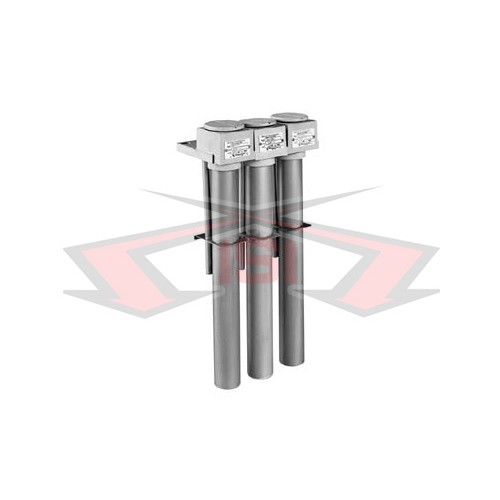Acid Bath Heaters
Acid bath heaters are heaters that are specifically designed to be used
for heating by companies that manufacture chemicals or work in a chemical
environment. There are numerous types of these products, including lead
resistance, glass heating resistance, titanium resistance, Teflon resistance,
and quartz resistance. The properties of these heaters vary greatly depending
on their usage area.
Acid Bath Heaters
Acid bath heaters are essentially heaters that participate in the heating of chemicals. We can manufacture these items in the sizes and types that you require. We manufacture these products with a Teflon coating on the upper part of the stainless tube. The main function of these heaters is to heat oil, acid, chemical liquid, and water in a very short period using the special materials contained within them. Acid bath heaters provide high performance if you make the right choices.
Usage Areas of Acid Bath Heaters
Acid bath heaters are specialized heating elements designed to provide safe and efficient heating in environments containing aggressive chemicals. These types of heaters come in different options such as quartz heaters, Teflon-coated resistors, and phosphoric acid heating systems. Due to their high chemical resistance, they can be safely used in environments where corrosive liquids are present.
These heaters are widely used in chemical processing plants, metal plating industries, food production processes, and the pharmaceutical industry. They offer effective solutions for heating various acidic and basic solutions, controlling the temperature of pure water and process water. Additionally, they are commonly used in galvanic plating baths and surface cleaning processes.
Usage Areas of Acid Bath Heaters
- Chemical Processing Plants: Used for controlled heating of liquids in production processes involving aggressive chemicals. Ensures that chemical reactions occur efficiently by maintaining ideal temperature levels. It also supports the homogeneous mixing of solutions and stabilizes chemical processes.
- Metal Plating and Galvanization: Ensures efficient execution of plating processes in acidic baths. Helps achieve a smoother coating on metal surfaces in electroplating and anodizing processes. Additionally, uniform heat distribution enhances coating quality and speeds up the process.
- Food Industry: Provides heating solutions that comply with food safety regulations through special coatings and insulation materials. Maintains the temperature of sterilization solutions used in food production, ensuring hygiene standards. It also plays a crucial role in pasteurization and thermal processing of various liquids or materials.
- Pharmaceutical and Biotechnology: Used in laboratory and production processes that require precise temperature control. In pharmaceutical production, it ensures the correct temperature conditions for preserving the desired properties of certain chemical compounds. In biotechnology laboratories, it creates an ideal temperature environment for growing microorganisms or carrying out biochemical reactions.
- Surface Cleaning and Rinsing Processes: Plays a crucial role in industrial cleaning systems by heating water and chemical solutions. Helps remove oil, dirt, and other surface contaminants more effectively. Additionally, heated cleaning solutions ensure a more hygienic cleaning process without leaving residues on surfaces.
- Petrochemical and Plastics Industry: Heating systems are used to maintain the ideal viscosity levels of petroleum-based liquids and chemical solutions. In plastic manufacturing, it assists in preheating and temperature control to facilitate the processing of certain polymers.
- Automotive and Aerospace Industry: Used for cleaning metal surfaces, preparing them for coating, and drying paint. Particularly important in the cleaning and coating of aircraft components, where maintaining consistent temperature levels enhances process quality.
Installation and Safety Measures for Acid Bath Heaters
For acid bath heaters to operate with maximum efficiency, they must be correctly installed, and appropriate safety precautions must be taken. When placed inside or on the surface of a tank, these heaters ensure homogeneous heating of the liquid. These high-efficiency heating systems offer significant advantages in terms of durability and energy savings.
During installation, proper connections must be made to ensure electrical safety, and thermal sensors should be integrated to protect against overheating. Additionally, the selection of coating materials should consider their chemical resistance to ensure long-lasting performance.
Acid bath heaters are reliable and efficient heating solutions with high chemical resistance. When correctly selected and used under appropriate conditions, they contribute to the safer and more efficient execution of industrial processes. These heaters, manufactured with different materials and designs according to application needs, can be customized for specific projects.
Acid Bath Heaters Technical Specifications
• Acid bath heaters are used in the heating process of many substances
such as oil, liquid, and acid.
• These heaters are produced in the dimensions you need.
• When acid bath heaters interact with a chemical,
they can quickly wear out. To prevent wear, various materials such as chrome,
copper, Teflon, brass, iron, quartz, titanium, and glass are used in their
bodies.
• Because these products are coated with special
materials, their durability is enhanced.
• The stainless pipe is passed through the Teflon hose.
Additionally, static Teflon coating can be created. Production can be made with
the features that you want thanks to these features.
• Acid bath heaters can be used to heat any abrasive
liquid material.
• In industrial machines, these products can achieve
temperatures of up to 500 degrees.
• In addition to heating liquid materials, production can be made in a variety of strengths depending on the intended features.
To get detailed information about acid bath heaters, you can contact us now and order a heater with the features you want.
How to Choose Acid Bath Heaters?
When choosing acid bath heaters, first, the purpose of use should be
considered. Because these heaters are commonly used in
high-risk areas, they must be carefully chosen. Following this, you must
consider the size and power of the features you desire.
When it comes to acid bath heaters, you can place your orders right away by contacting us, as we have the features, materials, and sizes you require. You can contact our company right now for more information and to place an order.
Acid Bath Heater Prices
Acid bath heaters are specialized resistance heaters used for heating liquids in various industries. Due to their high chemical resistance, these heaters can be safely used in aggressive chemical environments. The prices of acid bath heaters vary depending on the area of use and technical specifications.
The pricing of acid bath heaters depends on factors such as material composition, power capacity, dimensions, and special coating types. For instance, Teflon-coated heaters offer higher chemical resistance compared to quartz tube heaters, leading to differences in pricing. Additionally, factors such as the type of liquid being heated, required temperature, and operating environment play a crucial role in determining the final cost.
Acid bath heaters are widely used in chemical processing plants, metal plating and surface treatment industries, the food sector, and pharmaceutical applications. In these environments, it is essential to use high-quality and durable heaters to ensure even heating of liquids and maintain process continuity. Therefore, when analyzing costs, it is important to consider not only the initial investment but also the long-term performance of the product.
For optimal efficiency, selecting the right capacity for acid bath heaters is crucial, and installation should be performed according to the manufacturer's guidelines. Choosing the wrong capacity may lead to excessive energy consumption or imbalances in the heating process. Thus, consulting an expert during the project planning stage is highly recommended.
To obtain detailed pricing information and learn more about the project planning process for acid bath heaters, feel free to contact us. Our team can provide detailed insights into the most suitable heater models for your needs and offer customized price quotes with advantageous solutions.
Acid Bath Heater
An acid bath heater is a specialized type of heater used for heating purposes in chemical production and operations working within a chemical environment. Depending on environmental conditions, acid bath heaters are produced with different specifications.
Technical Information of Acid Bath Heaters
- Material: Lead, PTFE (polytetrafluoroethylene), glass, copper, chrome, silica
- Power: Can range from 100 W to 5000 W
- Voltage: Can be within a range of 12 V to 480 V
- Temperature: Can range from 100°C to 800°C
- Diameter: Varies between 6 mm to 50 mm
- Length: Varies between 100 mm to 3000 mm
- Connection Type: Threaded, piston-based, or other types
- Thermocouple Type: J, K, T, E, or alternatively specified
- Heating Element Type: Wire-wound, mica band, or ceramic insulated, among others
- Cooling Method: Can be air or water-cooled
- Protection Class: Can be IP65 or higher
- Mounting Style: Flanged, bolted, or other mounting types available
Applications of Acid Bath Heaters
- Food Industry: Acid baths are used in food processing facilities, particularly in industrial cleaning and disinfection processes.
- Automotive Industry: Acid baths are used in the automotive sector for cleaning, passivation, or coating of parts.
- Power Plants: Acid baths are used in energy production facilities, especially for the maintenance and cleaning of boilers and piping systems.
- Swimming Pool and Spa Industry: Acid baths are used in swimming pool and spa facilities to maintain pH balance and chemical equilibrium.
- Oil and Gas Industry: Acid baths are used in oil and gas exploration and production facilities for cleaning and maintenance of pipelines.
Advantages of Acid Bath Heaters
- Easy Installation and Maintenance: Acid bath heaters can typically be installed quickly and easily. Their compact design allows them to be used even in confined spaces. Additionally, maintenance procedures are simple; with regular cleaning and periodic inspections, long-term use can be ensured.
- High Chemical Resistance: Acid bath heaters are designed to operate safely even in aggressive chemical environments. Manufactured with specially coated materials, these heaters exhibit high resistance to corrosive substances such as acids and bases.
- Energy Efficiency: Modern acid bath heaters are designed to utilize energy in the most efficient way. They provide high heating performance with low energy consumption, helping businesses minimize energy costs. Insulated models reduce heat loss, ensuring lower power consumption.
- Precise Temperature Control: These heaters provide precise temperature regulation for industrial processes, ensuring safer and more efficient operations. With thermostats and automatic temperature adjustments, the desired heat level can be set with high accuracy.
- Flexible Design Options: Different designs are available depending on the application. Vertical and horizontal models can be manufactured to fit various tanks and containers. Additionally, custom sizing and technical specifications can be accommodated according to customer requirements.
- Eco-Friendly Options: Some modern acid bath heaters are made from environmentally friendly and recyclable materials, minimizing their environmental impact. Energy-efficient models with low emission output are ideal for environmentally conscious businesses.
- Durable and Long-Lasting Structure: Manufactured from high-quality materials, acid bath heaters resist high temperatures and aggressive chemicals, ensuring safe operation for many years. Their corrosion-resistant structure minimizes the need for frequent maintenance.
- Wide Range of Applications: These heaters can be used in various industries, including chemical processing plants, metal plating facilities, the food industry, and pharmaceutical manufacturing. They offer a reliable solution for applications requiring precise heating.
- Cost-Effective Solution: They provide an economical solution in terms of both initial investment and operational expenses. Their long-lasting structure and low energy consumption contribute to significant cost savings over time.
Materials Used in Acid Bath Heater Production
- Nickel Alloys: Nickel-based alloys provide high temperature resistance and corrosion resistance, commonly used in the heating elements of acid bath heaters.
- Quartz: Quartz is resistant to high temperatures and chemicals, can be used as a thermal insulation element and for strengthening the internal structure of the bath heaters.
- PVC (Polyvinyl Chloride): PVC is a polymer material with chemical resistance, used in some components of acid bath heaters, especially for protective coatings and insulation.
- Fiberglass: Fiberglass is a lightweight and durable material used in the bodies of acid bath heaters. It is resistant to corrosion and provides thermal insulation.
- Epoxy Resin: Epoxy resin is chemically resistant and can be used as an adhesive or for coatings in some parts of acid bath heaters.
- Glass Fiber Reinforced Plastics: Strong and lightweight, glass fiber reinforced plastics can be used in structural components of acid bath heaters, especially in applications requiring durability.
Technical Details to Consider in Acid Bath Heater Selection
- Temperature Control and Precision: The temperature control provided by the heater is important for process consistency and quality.
- Compliance and Standards: The heater should comply with industrial and safety standards to ensure performance and safety.
- Maintenance Ease and Lifespan: The selected heater should be easy to maintain and have a long lifespan to reduce operational costs.
- Heating Area and Distribution: The heating area and distribution should provide uniform heating for process efficiency and quality.
- Energy Efficiency: Energy efficiency should be considered in the design and operation of the heater to reduce energy consumption.
- Size and Design Flexibility: The size and design of the heater should be suitable for the application, offering flexibility for various uses.
High Thermal Efficiency Features of Acid Bath Heaters
Acid bath heaters are specially designed for industrial heating systems to ensure high efficiency. Widely used in chemical baths, galvanizing plants, and metal coating processes, these heaters maximize energy usage to provide superior thermal efficiency.
1. Fast and Balanced Heating
Acid bath heaters quickly reach the desired temperature due to heating elements made from special alloys. Their high conductivity ensures uniform heat distribution, allowing chemical solutions to heat evenly.
2. Energy-Efficient Design
With advanced insulation and optimized heating technologies, these heaters minimize energy losses. High-efficiency models enable long-term use with low energy consumption, reducing operational costs.
3. Chemical and Corrosion Resistance
Acid bath heaters are made from materials resistant to aggressive chemicals. Coating options such as Teflon, quartz, or stainless steel ensure long-lasting performance and continuous efficiency.
4. Advanced Temperature Control Mechanism
These heaters are equipped with intelligent control systems that prevent temperature fluctuations. Integrated with thermostats and sensors, they maintain optimal heat levels and prevent unnecessary energy consumption.
5. High Power Density
Manufactured with advanced technology, acid bath heaters offer high power density, providing excellent heating capacity even in limited spaces. This feature makes them ideal for small-volume chemical baths.
6. Durable and Long-Lasting Structure
Made from durable materials, these heaters resist wear and chemical reactions. With proper usage and regular maintenance, they can function efficiently for years.
7. Eco-Friendly Heating Solutions
With low energy consumption and advanced insulation features, these systems provide an environmentally friendly heating solution. By helping reduce the carbon footprint, they contribute to sustainable production processes.
The high thermal efficiency features of acid bath heaters allow businesses to save energy and optimize their production processes. Contact us to determine the best solutions for your needs.
Energy Savings with Acid Bath Heaters
Acid bath heaters help businesses reduce costs by increasing energy efficiency in chemical processing applications. These heaters provide controlled heating, prevent unnecessary energy consumption, and offer long-lasting performance.
High-efficiency heating elements transfer energy directly to the liquid, ensuring maximum heat transfer with minimal loss. With advanced thermal conductivity features, they optimize energy consumption and accelerate the operational process.
Smart temperature control systems prevent overheating, ensuring energy savings. Thermostats and temperature sensors determine the necessary heat level and prevent excessive energy usage.
Insulation technology minimizes heat loss, allowing high performance with lower energy consumption. Using corrosion-resistant materials such as stainless steel, Teflon, or quartz coating ensures durability and long-lasting use.
With rapid heating capabilities, these heaters reach operating temperatures in a short time, consuming less energy than traditional methods. This allows businesses to achieve an efficient heating solution with lower production costs.
Acid bath heaters not only save energy but also offer environmentally friendly solutions, helping to reduce carbon footprint. Selecting the right heater is crucial for an efficient and sustainable production process.
Technical Considerations When Selecting Acid Bath Heaters
When selecting acid bath heaters, factors such as chemical resistance, temperature control, and energy efficiency should be considered. Incorrect selection can reduce system performance and shorten the heater's lifespan.
Chemical Resistance: The type of chemicals used in the operating environment should be taken into account. Materials resistant to corrosive substances such as acids and bases (e.g., Teflon or quartz coating) should be chosen.
Temperature Range: The heater's operating temperature range should be determined, and the selected material should withstand these temperatures. Otherwise, material deformation and performance loss may occur.
Power and Watt Density: The appropriate watt density should be selected for the application. High watt density provides fast heating, while low watt density ensures longer-lasting use. Power calculations should be based on the volume of the liquid and the required heating time.
Installation and Connection Options: The installation method should be suitable for the operating environment. Vertical, horizontal, or immersion-type installation options should be considered. Additionally, connection points should be securely and leak-proof mounted.
Thermal Control and Safety: Thermostats or temperature sensors should be used to prevent overheating. Models with dry-run protection should be preferred for safer operation.
Energy Efficiency: High-efficiency models should be selected to reduce energy consumption and operational costs. Models with thermal insulation can provide additional savings.
When selecting acid bath heaters, material compatibility and technical specifications should align with application requirements. Choosing the right heater ensures long-lasting and efficient operation, reducing maintenance costs and energy consumption.
Operating Principle of Acid Bath Heaters
Acid bath heaters are specially designed heating elements that safely and efficiently heat liquids in environments containing aggressive chemical solutions. The operating principle of these heaters is based on converting electrical energy into heat energy to bring the liquid to a desired temperature.
Conversion of Electrical Energy to Heat: The heating elements inside the heater generate heat when an electric current is applied. This heat is then transferred directly or indirectly to the liquid, raising its temperature to the required level.
Heat Transfer and Distribution: The surface of the heating elements is designed to either be in direct contact with the liquid or be protected by special coating materials (such as Teflon or quartz). These coatings optimize heat transfer while also providing resistance against corrosive chemicals.
Thermal Control Mechanism: Temperature sensors and thermostats ensure that the heater operates within the predefined temperature range. Once the desired temperature is reached, the thermostat switches off the heater to prevent overheating, improving energy efficiency and system safety.
Protection Against Dry Operation: Some models include safety systems that prevent dry operation. If the liquid level falls below a certain threshold, the system automatically stops the heater, preventing damage or burnout.
Different Designs for Various Applications: Acid bath heaters are manufactured in different shapes and installation options depending on the application. Vertical, horizontal, or immersion-type models are selected based on the liquid's properties and tank design.
In conclusion, acid bath heaters are designed using high-chemical-resistance materials, allowing them to be safely used in aggressive liquid environments. With proper temperature control and safety precautions, they provide a long-lasting, efficient, and safe heating solution.
Frequently Asked Questions
Acid Bath Heaters

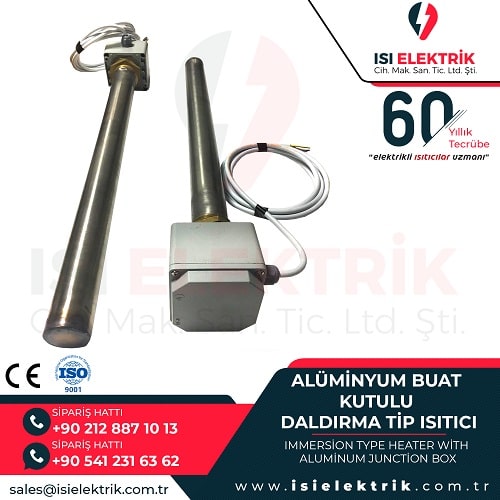
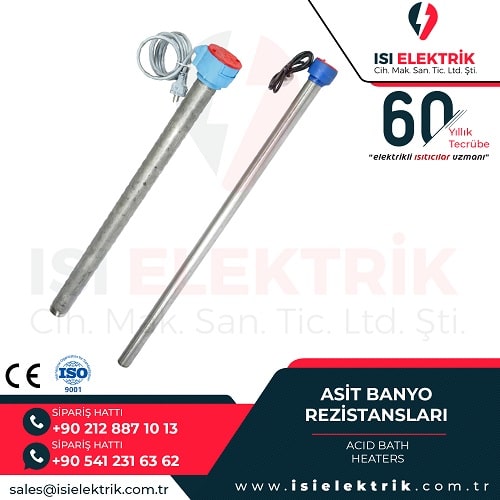
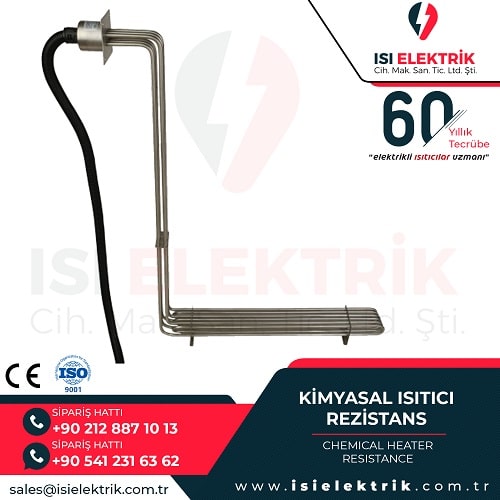
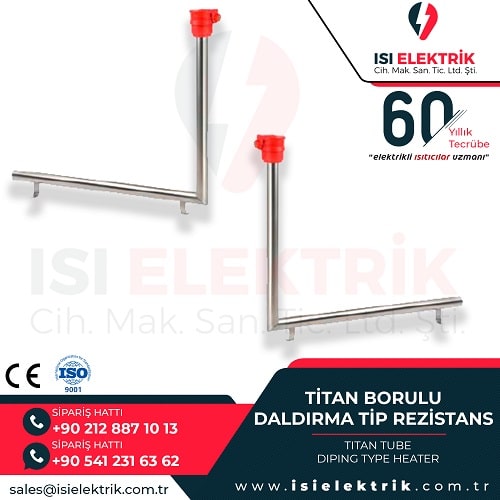
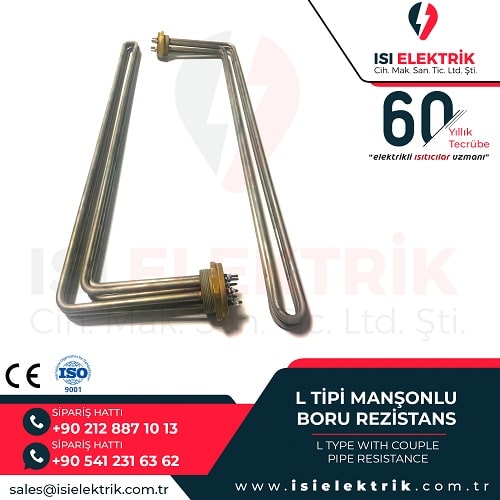

-min-500x500.jpg)
-min-500x500.jpg)

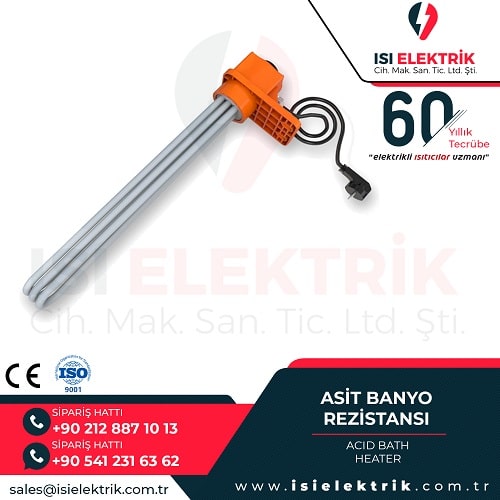
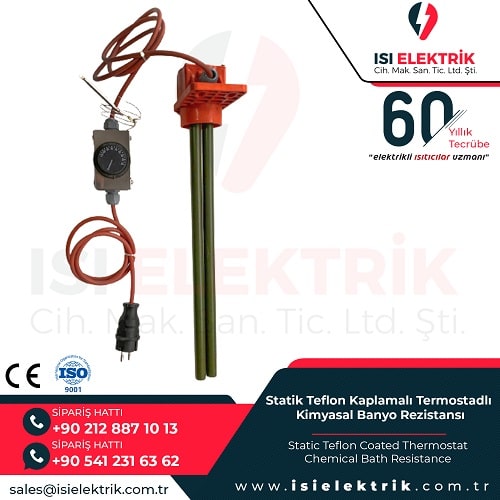


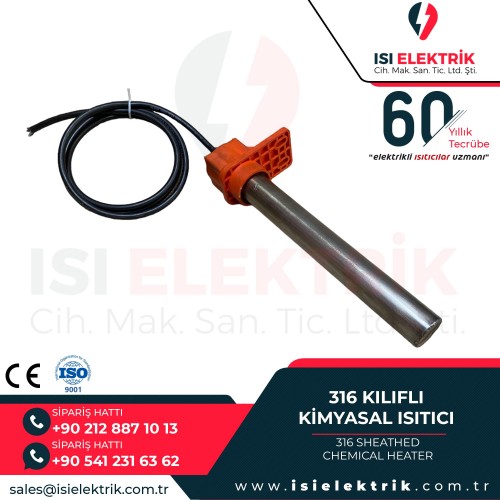
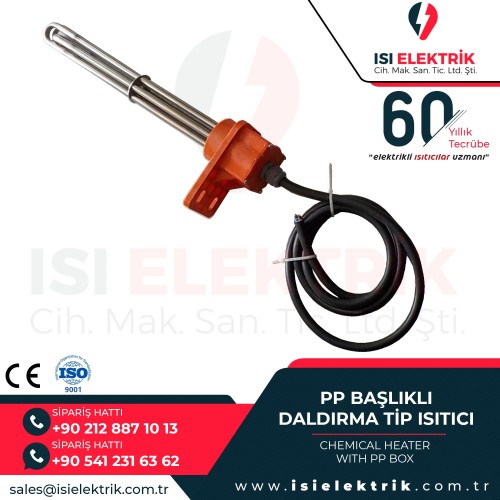
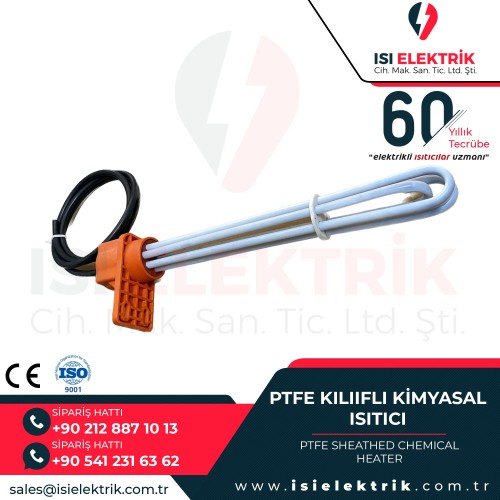
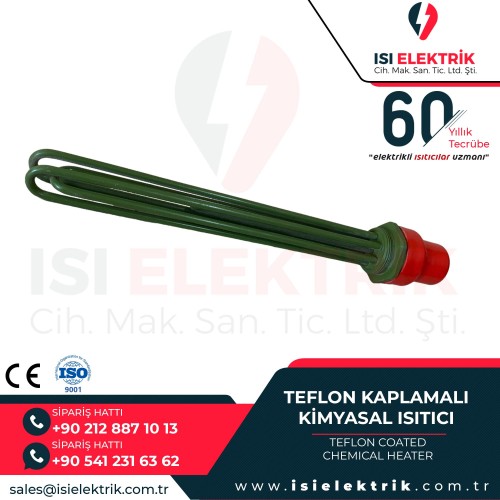

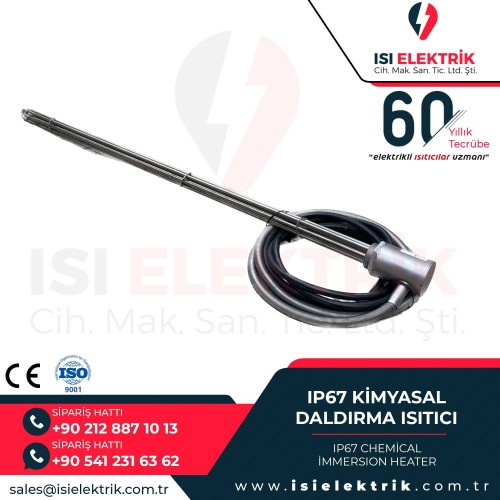
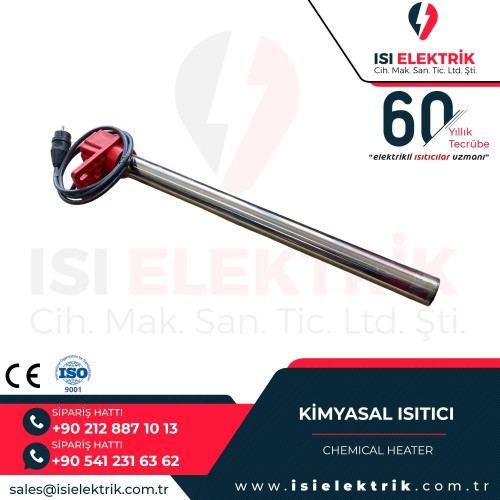
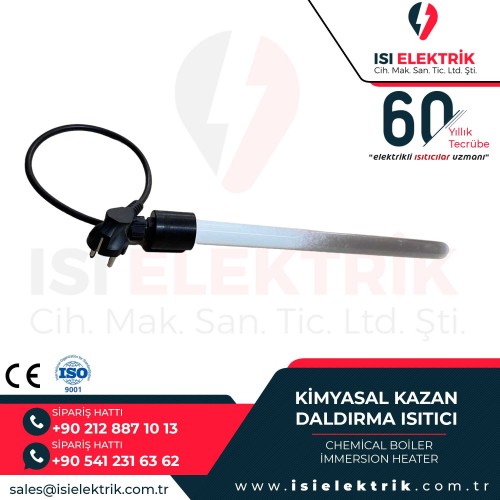
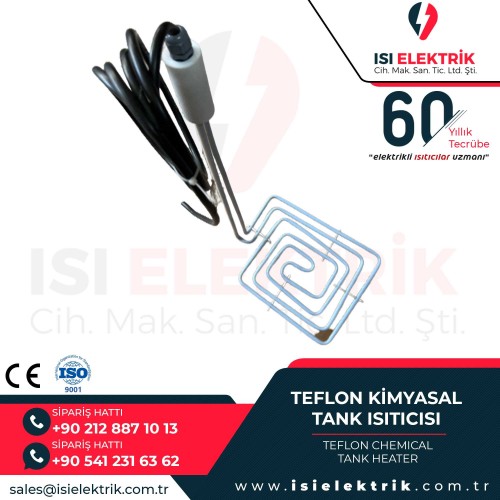
-500x500w.jpg)
-500x500w.jpg)
-500x500w.jpg)
-500x500w.jpg)
-500x500w.jpg)
-500x500w.jpg)
-500x500w.jpg)
-500x500w.jpg)
-500x500w.jpg)
-500x500w.jpg)
-500x500w.jpg)
-500x500w.jpg)
-500x500w.jpg)
-500x500w.jpg)
